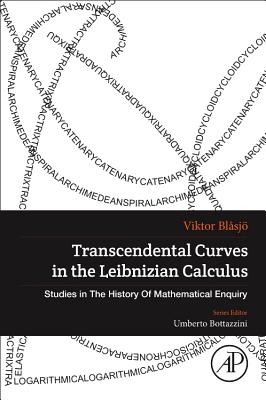
- We will send in 10–14 business days.
- Author: Viktor Blasjo
- Publisher: Academic Press
- ISBN-10: 012813237X
- ISBN-13: 9780128132371
- Format: 19.1 x 23.5 x 1.5 cm, softcover
- Language: English
- SAVE -10% with code: EXTRA
Reviews
Description
Transcendental Curves in the Leibnizian Calculus analyzes a mathematical and philosophical conflict between classical and early modern mathematics. In the late 17th century, mathematics was at the brink of an identity crisis. For millennia, mathematical meaning and ontology had been anchored in geometrical constructions, as epitomized by Euclid's ruler and compass.
As late as 1637, Descartes had placed himself squarely in this tradition when he justified his new technique of identifying curves with equations by means of certain curve-tracing instruments, thereby bringing together the ancient constructive tradition and modern algebraic methods in a satisfying marriage. But rapid advances in the new fields of infinitesimal calculus and mathematical mechanics soon ruined his grand synthesis.
Descartes's scheme left out transcendental curves, i.e. curves with no polynomial equation, but in the course of these subsequent developments such curves emerged as indispensable. It was becoming harder and harder to juggle cutting-edge mathematics and ancient conceptions of its foundations at the same time, yet leading mathematicians, such as Leibniz felt compelled to do precisely this. The new mathematics fit more naturally an analytical conception of curves than a construction-based one, yet no one wanted to betray the latter, as this was seen as virtually tantamount to stop doing mathematics altogether. The credibility and authority of mathematics depended on it.
EXTRA 10 % discount with code: EXTRA
The promotion ends in 16d.21:22:11
The discount code is valid when purchasing from 10 €. Discounts do not stack.
- Author: Viktor Blasjo
- Publisher: Academic Press
- ISBN-10: 012813237X
- ISBN-13: 9780128132371
- Format: 19.1 x 23.5 x 1.5 cm, softcover
- Language: English English
Transcendental Curves in the Leibnizian Calculus analyzes a mathematical and philosophical conflict between classical and early modern mathematics. In the late 17th century, mathematics was at the brink of an identity crisis. For millennia, mathematical meaning and ontology had been anchored in geometrical constructions, as epitomized by Euclid's ruler and compass.
As late as 1637, Descartes had placed himself squarely in this tradition when he justified his new technique of identifying curves with equations by means of certain curve-tracing instruments, thereby bringing together the ancient constructive tradition and modern algebraic methods in a satisfying marriage. But rapid advances in the new fields of infinitesimal calculus and mathematical mechanics soon ruined his grand synthesis.
Descartes's scheme left out transcendental curves, i.e. curves with no polynomial equation, but in the course of these subsequent developments such curves emerged as indispensable. It was becoming harder and harder to juggle cutting-edge mathematics and ancient conceptions of its foundations at the same time, yet leading mathematicians, such as Leibniz felt compelled to do precisely this. The new mathematics fit more naturally an analytical conception of curves than a construction-based one, yet no one wanted to betray the latter, as this was seen as virtually tantamount to stop doing mathematics altogether. The credibility and authority of mathematics depended on it.


Reviews